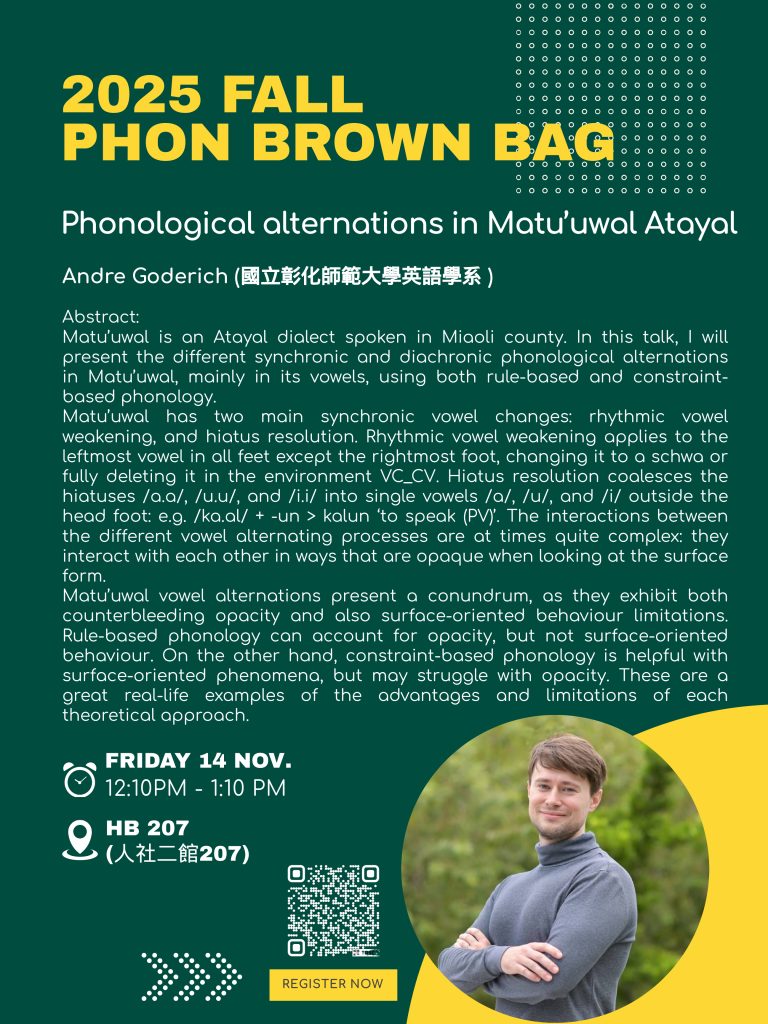Dear All,
We are pleased to invite you to the upcoming talk of the NYCU Phon Brown Bag Series:
Abstract:
Matu’uwal is an Atayal dialect spoken in Miaoli county. In this talk, I will present the different synchronic and diachronic phonological alternations in Matu’uwal, mainly in its vowels, using both rule-based and constraint-based phonology.
Matu’uwal has two main synchronic vowel changes: rhythmic vowel weakening, and hiatus resolution. Rhythmic vowel weakening applies to the leftmost vowel in all feet except the rightmost foot, changing it to a schwa or fully deleting it in the environment VC_CV. Hiatus resolution coalesces the hiatuses /a.a/, /u.u/, and /i.i/ into single vowels /a/, /u/, and /i/ outside the head foot: e.g. /ka.al/ + -un > kalun ‘to speak (PV)’. The interactions between the different vowel alternating processes are at times quite complex: they interact with each other in ways that are opaque when looking at the surface form.
Matu’uwal vowel alternations present a conundrum, as they exhibit both counterbleeding opacity and also surface-oriented behaviour limitations. Rule-based phonology can account for opacity, but not surface-oriented behaviour. On the other hand, constraint-based phonology is helpful with surface-oriented phenomena, but may struggle with opacity. These are a great real-life examples of the advantages and limitations of each theoretical approach.

